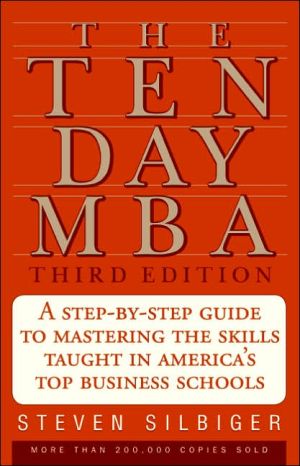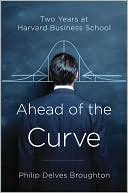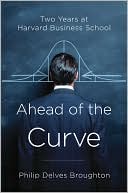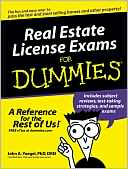Ten-Day MBA: A Step-by-Step Guide to Mastering the Skills Taught in America's Top Business Schools
Now totally revised — the 3rd edition of The Ten-Day MBA includes the latest topics taught at America's top business schools, including leadership, corporate ethics and compliance, financial planning, and real estate. This internationally acclaimed guide (more than 200,000 copies sold in the United States and around the world) distills the material of the most popular business-school courses taught at Harvard, Stanford, the University of Pennsylvania, the University of Chicago, Northwestern,...
Search in google:
This fully updated edition of the +200,000-copy bestseller teaches all the expertise you need -- including a full chapter devoted to Ethics -- to succeed in today's competitive business world. Read one easy-to-understand chapter a day and master the skills taught in America's Top Ten business schools at a fraction of the time and cost.
The Ten-Day MBA 3rd Ed.\ A Step-By-Step Guide To Mastering The Skills Taught In America's Top Business Schools \ Chapter One\ Marketing\ Marketing Topics:\ The 7 Steps of Marketing Strategy Development\ \ The Buying Process\ \ \ Segmentation\ \ Product Life Cycle\ \ Perceptual Mapping\ \ Margins\ \ The Marketing Mix and the 4 P's\ \ Positioning\ \ Distribution Channels\ \ Advertising\ \ Promotions\ \ Pricing\ \ Marketing Economics\ \ \ A scene from the boardroom of Acme Corporation:\ \ Director: Every time we do our annual review of our execu-tives' salaries, I cringe when I think that we are paying more to Jim Mooney, our vice-president of marketing fromOhio State, than to our company's president, Hank Bufford from Harvard. I just don't understand it.\ Chairman of the board: What don't you understand? With-out Jim's sales we wouldn't need a president-or anyone else for that matter!\ Marketers see the world like the chairman of Acme. As renowned Professor Philip Kotler of the Kellogg School at Northwestern teaches, marketing comes first. Marketing integratesall the functions of a business and speaks directly to the customer through advertising, salespeople, and other marketing activities.\ Marketing is a special blend of art and science. There is a great deal to be learned in marketing classes, but no amount of schooling can teach you the experience, the intuition, and thecreativity to be a truly gifted marketer. That's why those with the gift are so highly paid. Formal education can only provide MBAs with a frameworkand a vocabulary to tacklemarketing challenges. And that is the goal of this chapter and of the numerous expensive executive seminars conducted by the leading business schools.\ The top schools prepare their students for executive marketing positions-in spite of the fact that their first jobs will likely be as lowly brand assistants at large food or soap companies.Therefore, the core curriculum stresses the development of full-fledged marketing strategies instead of the technical expertise needed on an entry-level job out of MBA school.\ Numbers-oriented students tend to view marketing as one of the "soft" MBA disciplines. In fact, marketers use many quantitative or "scientific" techniques to develop and evaluatestrategies. The "art" of marketing is trying to create and implement a winning marketing plan. There are literally an infinite number of possibilities that may work. McDonald's, BurgerKing, Wendy's, Hardee's, and White Castle successfully sell burgers, but they all do it in different ways. Because there are no "right" answers, marketing classes can provide studentswith either an opportunity to show their individual flair, or many hours of frustration as they try to come up with creative ideas. Marketing was my favorite subject. It was fun cookingup ideas for discussion. My B-school buddies still kid me about the time I proposed to the class that Frank Perdue introduce a gourmet chicken hot dog.\ The Marketing Strategys Process\ \ \ The marketing process is a circular function. Marketing plans undergo many changes until all the parts are internally consistent and mutually supportive of the objectives. All aspectsof a proposal need to work together to make sense. It is very easy to get one part right, but an internally consistent and mutually supportive marketing plan is a great accomplishment.It's a seven-part process.\ 1. Consumer Analysis\ \ \ \ 2. Market Analysis\ \ 3. Review of the Competition and Self\ \ 4. Review of the Distribution Channels\ \ 5. Development of a "Preliminary" Marketing Mix\ \ 6. Evaluation of the Economics\ \ 7. Revision and Extension of Steps 1-6 until a consistent plan emerges...\ \ \ \ \ The Ten-Day MBA 3rd Ed.\ A Step-By-Step Guide To Mastering The Skills Taught In America's Top Business Schools. Copyright © by Steven Silbiger. Reprinted by permission of HarperCollins Publishers, Inc. All rights reserved. Available now wherever books are sold.







